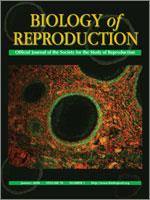We aimed to elucidate the mechanism of action of estrogenic endocrine disruptors and the rescue of reproductive function, particularly the responsiveness of testes to eCG and/or activin A (ACT) after establishing reproductive disorders. Newborn male mice (n = 29) were randomly divided into an untreated group and three treatment groups that received diethylstilbestrol (DES; 100 μg per animal) subcutaneously on Postnatal Day 3 to establish reproductive disorders and daily treatment with PBS (controls: DES PBS), eCG (eCG group: DES eCG), or eCG ACT (eCG ACT group: DES eCG ACT) at 6–8 wk of age prior to mating. After treatment, the controls showed diminished Leydig cells in the testes and thin germ cell layers containing pyknotic germ cells and multinucleated cells. In the eCG and eCG ACT groups, spermatids and Leydig cells increased markedly. The immunoexpression of androgen receptors in the eCG group and steroidogenic acute regulatory (STAR) protein in the eCG and eCG ACT groups recovered to approximately the levels in the untreated group; plasma LH and testosterone levels also increased relative to those in the controls. In addition, the cell proliferation index, which is estimated from 5-bromo-2′-deoxyuridine immunoexpression in spermatogonia, increased significantly under eCG treatment, and even more with eCG ACT. However, the numbers of germ and Leydig cells decreased at 12 wk of age. Thus, ACT and eCG help the testes to recover from the dysfunction induced by neonatal DES administration. Furthermore, the permanent male reproductive disorder induced by neonatal exposure to estrogenic agents may be more likely to result from dysfunction of the hypothalamic-pituitary axis than from dysfunction of the lower reproductive organs.
How to translate text using browser tools
1 January 2008
Activin A and Equine Chorionic Gonadotropin Recover Reproductive Dysfunction Induced by Neonatal Exposure to an Estrogenic Endocrine Disruptor in Adult Male Mice
Katsuhiko Warita,
Kazutaka Okamoto,
Ken-ichiro Mutoh,
Yoshihisa Hasegawa,
Zhan-Peng Yue,
Toshifumi Yokoyama,
Yoshiki Matsumoto,
Takanori Miki,
Yoshiki Takeuchi,
Hiroshi Kitagawa,
Teruo Sugawara,
Nobuhiko Hoshi
ACCESS THE FULL ARTICLE

Biology of Reproduction
Vol. 78 • No. 1
January 2008
Vol. 78 • No. 1
January 2008
activin
activin A
androgen receptor
diethylstilbestrol
endocrine disruptor
equine chorionic gonadotropin
Leydig cells




